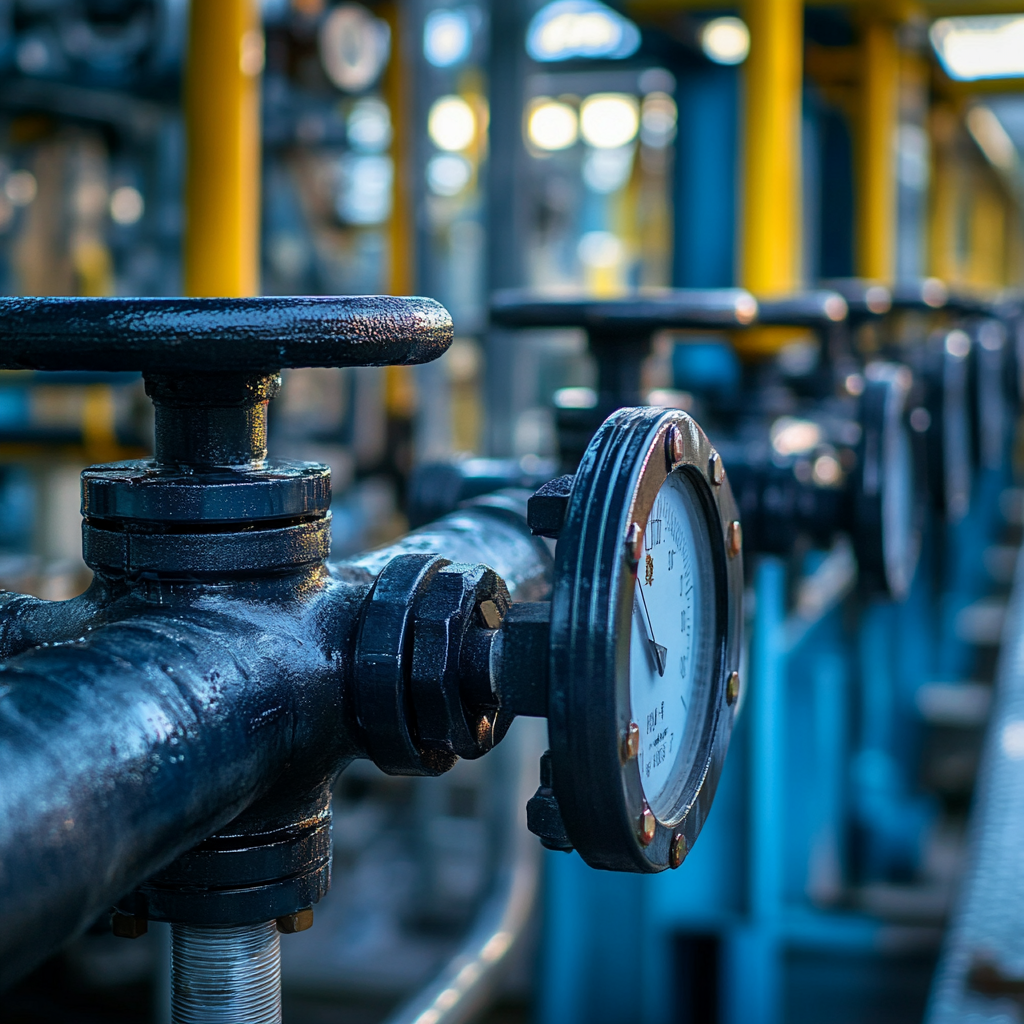Selecting the appropriate valve is crucial for ensuring the efficiency, safety, and longevity of your industrial system. This guide provides a systematic approach to valve selection, considering various factors such as application requirements, fluid characteristics, and operational conditions.
1. Understand the Application Requirements
Begin by clearly defining the purpose the valve will serve in your system:
- Flow Control: Regulating the rate of fluid flow.
- Isolation: Completely stopping or allowing flow.
- Backflow Prevention: Ensuring fluid flows in only one direction.
- Pressure Relief: Protecting the system from overpressure conditions.
Each function may necessitate a different type of valve. For instance, ball valves are excellent for isolation, while globe valves are suitable for flow regulation.
2. Analyze the Fluid Characteristics
The properties of the fluid passing through the valve significantly influence the selection:
- Type: Is it a gas, liquid, slurry, or steam?
- Corrosiveness: Does the fluid have corrosive properties that require special materials?
- Viscosity: Thicker fluids may need valves with specific designs to handle flow.
- Temperature and Pressure: High temperatures and pressures demand valves constructed from materials that can withstand such conditions.
Selecting materials compatible with the fluid ensures durability and prevents premature failure.
3. Determine the Required Valve Size
Proper sizing is essential for optimal performance:
- Flow Rate: Calculate the maximum and minimum flow rates the valve must handle.
- Pipe Size Compatibility: Ensure the valve's size matches the piping system to prevent flow restrictions or turbulence.
- Flow Coefficient (Cv): This value indicates the flow capacity of the valve; selecting a valve with an appropriate Cv ensures efficient operation.
Oversized or undersized valves can lead to inefficiencies and potential system issues.
4. Select the Appropriate Valve Type
Different valve types serve various functions:
- Ball Valves: Ideal for quick shut-off applications; they offer tight sealing and are easy to operate.
- Gate Valves: Suitable for on/off control; not recommended for flow regulation.
- Globe Valves: Designed for regulating flow; they provide good throttling capabilities.
- Butterfly Valves: Compact and lightweight; used for isolating or regulating flow.
- Check Valves: Prevent backflow; they allow flow in one direction only.
Choose the valve type that aligns with your system's operational needs.
5. Consider Actuation Methods
Determine how the valve will be operated:
- Manual: Operated by hand; suitable for systems with infrequent operation.
- Electric: Powered by electric actuators; ideal for remote or automated systems.
- Pneumatic: Utilize compressed air for operation; common in systems requiring rapid response.
- Hydraulic: Use fluid pressure for actuation; suitable for high-force applications.
The choice depends on factors like system automation, response time requirements, and available power sources.
6. Evaluate Material Compatibility
Ensure that all valve components are compatible with the system's operating conditions:
- Body Material: Common materials include stainless steel, brass, and PVC; selection depends on fluid type and operating environment.
- Seal and Seat Materials: Materials like PTFE, EPDM, or Viton are chosen based on chemical compatibility and temperature requirements.
Material selection is critical to prevent corrosion, wear, and failure.
7. Account for Environmental and Operational Conditions
Consider external factors that may affect valve performance:
- Ambient Temperature: Extreme temperatures can impact material integrity and actuator performance.
- Exposure to Elements: Outdoor installations may require weatherproof or corrosion-resistant valves.
- Installation Orientation: Some valves have orientation restrictions; ensure compatibility with system layout.
Adapting to environmental conditions ensures reliable and safe valve operation.
8. Ensure Compliance with Standards and Certifications
Verify that the selected valve meets industry and regulatory standards:
- API (American Petroleum Institute)
- ASME (American Society of Mechanical Engineers)
- ISO (International Organization for Standardization)
- CE Marking: Indicates conformity with health, safety, and environmental protection standards for products sold within the European Economic Area.
Compliance ensures quality, safety, and compatibility with existing systems.
9. Assess Maintenance and Lifecycle Costs
Evaluate the total cost of ownership:
- Initial Investment: Consider the purchase price in relation to features and quality.
- Maintenance Requirements: Some valves require regular maintenance; factor in associated costs and downtime.
- Spare Parts Availability: Ensure that replacement parts are readily available to minimize system downtime.
A valve with a higher upfront cost may offer savings over time through reduced maintenance and longer service life.
10. Consult with Manufacturers and Experts
Engage with valve manufacturers or industry experts:
- Technical Support: Manufacturers can provide detailed specifications and assist in selecting the appropriate valve.
- Customization Options: Discuss any unique requirements.
